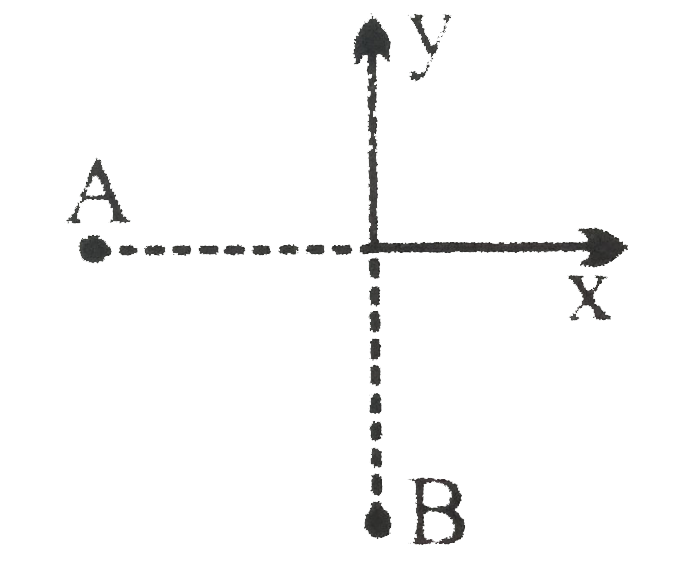Two bodies A and B are at position (2,3)m amd (5,7)m respectively. These two are moving with constant velocity 3ms−1 along −ve y axis and 4ms−1 along +ve x axis respectively. Minimum separation between them during their motion is
5m
3m
4m
10m
The correct Answer is:A
Since ¯¯¯VAB and ¯¯¯RBA are antiparrallel to each other initial separation is minimum at initial state
Topper's Solved these Questions
- TEST PAPERSBook:FIITJEEChapter:TEST PAPERSExercise:PHYSICS
Explore 747 Videos
- SIMPLE HARMONIC MOTIONBook:FIITJEEChapter:SIMPLE HARMONIC MOTIONExercise:Assignment Problems (Objective) (Level-II)
Explore 20 Videos
- WORK, ENERGY AND POWER Book:FIITJEEChapter:WORK, ENERGY AND POWER Exercise:COMPREHENSIONS ( Comprehension-II)
Explore 5 Videos
Similar Questions
Two particles are located on a horizontal plane at a distance 60m. At t=0 both the particles are simultaneously projected at angle 45∘ with velocities 2ms−1and14ms−1, respectively. Find
(a) Minimum separation between them during motion.
(b) At what time is the separation between them minimum ?
 .
.
View SolutionA body starts from the origin with an acceleration of 6ms−1 along the x - axis and 8ms−1 along the y - axis. Find its distance from the origin after 4s.
View Solution
Knowledge Check
Particles A and B are moving with constant velocities along x and y axis respectively, the graph of separation between them with time is
 A
A B
B C
C D
D
Two particles are thrown simultaneously from points A and B with velocities u1=2ms−1andu2−14ms−1, respectively, as shown in figure.

Minimum separation between A and B isA3 mB6 mC12 mD9 mA body starts from rest from the origin with an acceleration of 3m/s(2) along the x-axis and 4m/s2 along the y-axis. Its distance from the origin after 2s will be
A5mB10mC15mD20m
Two particles are simultaneously thrown from the top of two towards as shown. Their velocities are 2ms−1and14ms−1. Horizontal and vertical separations between these particles are 22 m and 9 m respectively. Then the minimum separation between the particles in the process of their motion in meters is (g=10ms−2)

View SolutionA body of mass m is moving with a constant velocity along a line parallel to the x-axis, away from the origin. Its angular momentum with respect to the origin
View SolutionTwo particle are at origin on horizontal x0y plane. At t-0, one particle is moving with constant velocity 12ms−1 at 30∘ ACW with postion x axis. Another particle has acceleration 6ms−2 along positive x axis and zero elocity. The magnitude of their minimum relative velocity during subsequenct motion will be
View SolutionA travelling acoustic wave of frequency 500 Hz is moving along the positive x-direction with a velocity of 300 ms−1. The phase difference between two points x1 and x2 is 60°. Then the minimum separation between the two points is
View SolutionA mass m is moving with a constant velocity along a line parallel to the x-axis, away from the origin. Its angular momentum with respect to the origin.
View Solution

